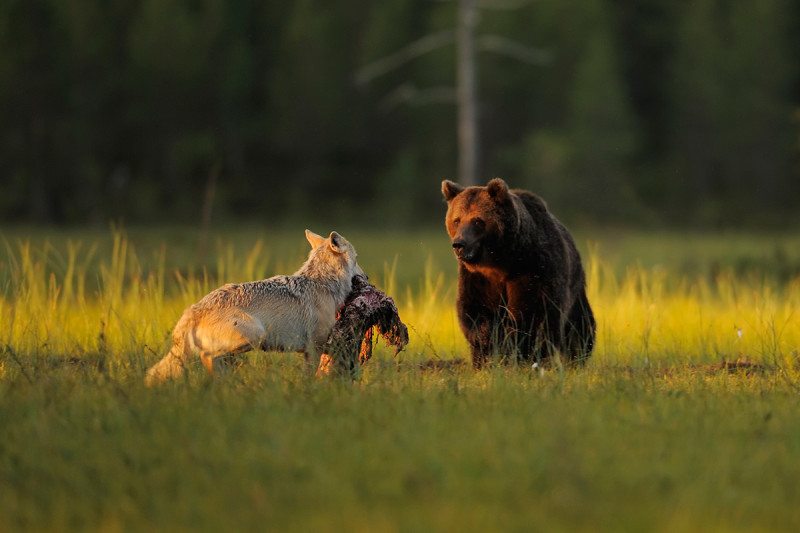8 February 2017
Why grey wolves kill less prey when brown bears are around

Wild Wonders of Europe/Widstrand/Naturepl.com
Wolves may be better at sharing their meals with bears than we thought.
Biologists have long assumed that when wolves and brown bears share territory, the wolves are forced to kill more often to make up for the food stolen by scavenging bears.
But when Aimee Tallian, a biologist at Utah State University, and her colleagues looked for evidence of this, they found the opposite. Where wolves live alongside bears in Scandinavia and Yellowstone National Park in the US, they actually kill less often.
“People had this general assumption, because you do see lynx and mountain lions abandon their kills once a bear takes it over, but no one had really looked at this in wolves before,” she says.
It’s not yet clear why this might be, but Tallian has a few theories.
Waiting for leftovers
One is that in winter, when wolves normally kill large animals like moose, there is enough meat on the carcass that it is worthwhile for the pack to spend a few extra days waiting around for leftovers after a scavenging bear is done with it, instead of going off to make another kill.
Another is that in spring and summer both wolves and bears prey on baby moose, and this competition over a finite resource might make it harder for both of them to find prey.
It’s probably some combination of the two, says Tallian, which will require further study to sort out. “We want to look at what component of that kill interval the bears are actually changing,” she says.
Heather Bryan, a biologist at the University of Victoria, Canada, says it may be impossible to generalise the results to other wolf and bear populations, because the dynamics of carnivore populations can change drastically depending on everything from food availability, the season and individual members of a pack. So there may be no specific lessons for conservationists protecting wild populations.
But the general principle of considering complex, multispecies interactions is vital. “The idea of thinking about the whole ecosystem and species interactions is important in conservation,” Bryan says.wol
Journal reference: Proceedings of the Royal Society B, DOI: 10.1098/rspb.2016.2368